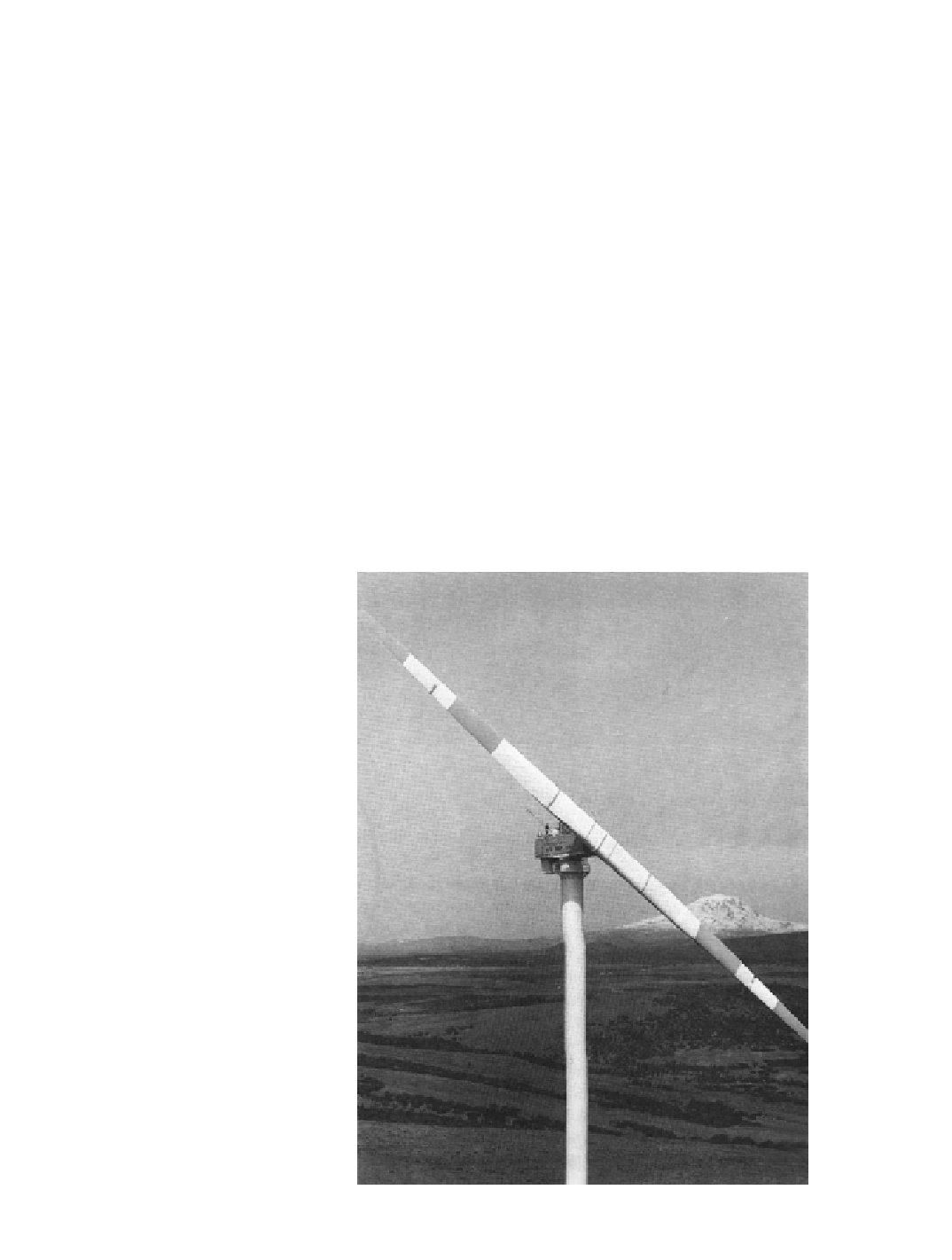Environmental Engineering Reference
In-Depth Information
NASA/DOE Second- and Third-Generation HAWTs
The Mod-2 Program
Even before the irst-generation Mod-1 HAWT began its test program, development
was started at NASA Lewis on a second-generation large-scale machine, to be named the
Mod-2 HAWT
, which would represent a major advance from earlier systems.
Boeing
Aerospace Corporation
received the development contract, and a site was selected at
Goodnoe Hills, near the Columbia River Gorge and the town of Goldendale, Washington.
The
Bonneville Power Administration
was the cooperating utility, with the power to be fed
into the grid of the Klickitat County Public Utility District.
The state of knowledge of structural dynamics of wind turbines had then reached the
stage where a “soft” structural design could be attempted on a large turbine. An upwind
rotor coniguration was selected to reduce the possibility of noise and cyclic loads from
tower shadow. As shown in Figure 3-37, the two-bladed rotor concept of the Mod-0 and
Mod-1 was retained. Instead of full-span pitch control, however, partial-span tip control
was selected, which allowed a teetered hub that was less expensive and structurally superior.
Economic optimization from the utility viewpoint, coupled with the federal role of
pursuing technology levels that were beyond the risk limits acceptable to a private company,
led to the selection of a power rating of 2.5 MW at a rated wind speed of 12.3 m/s (at the
hub) and a rotor diameter of 91.4 m. The 900-kN (100-ton) rotor was fabricated from
welded steel plates in ive separate sections: a hub, two mid-blades, and two pitchable tips.
These were bolted together at the site and lifted into place in one piece [Boeing 1982].
Figure 3-37. The 2.5-
MW Mod-2 HAWT,
the second-generation
turbine in the large-
scale segment of the
Federal Wind Energy
Program.
Its welded-
steel, teetered rotor was
91.4 m from tip to tip,
with pitchable tips.
(
Courtesy of NASA Lewis
Research Center
)

Search WWH ::

Custom Search